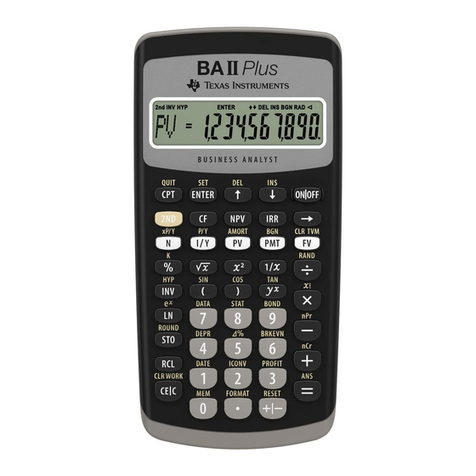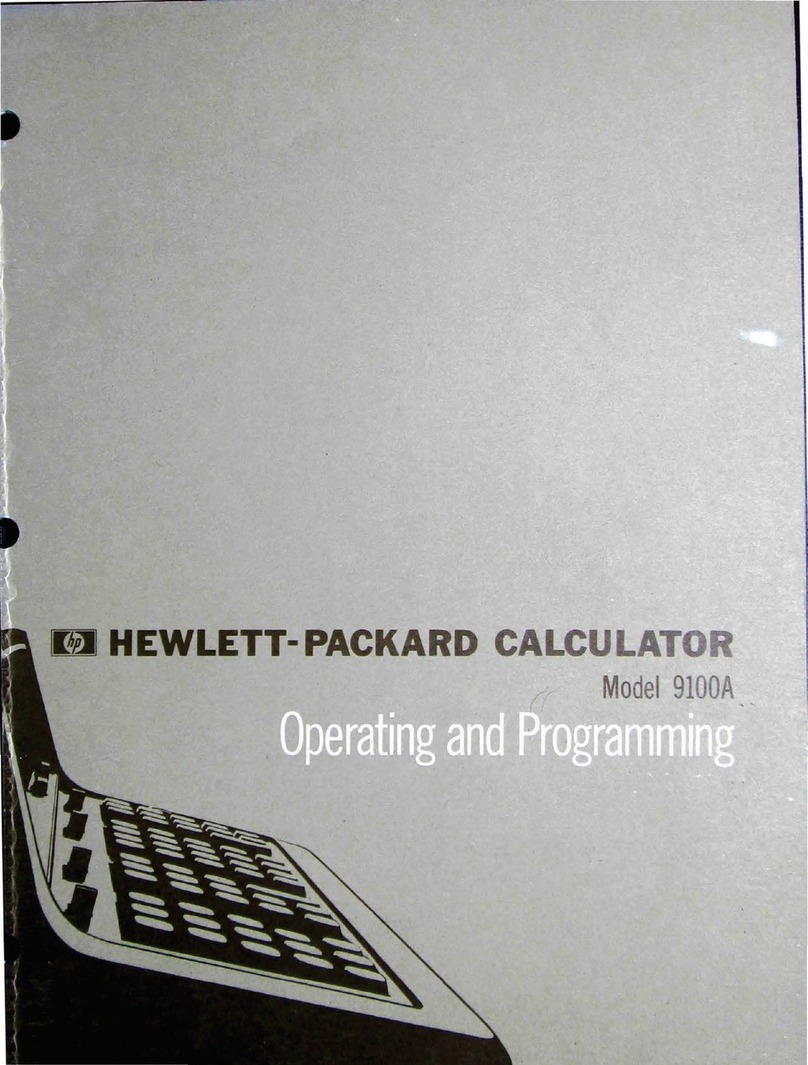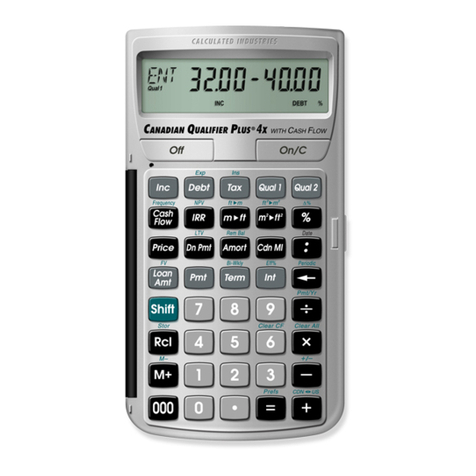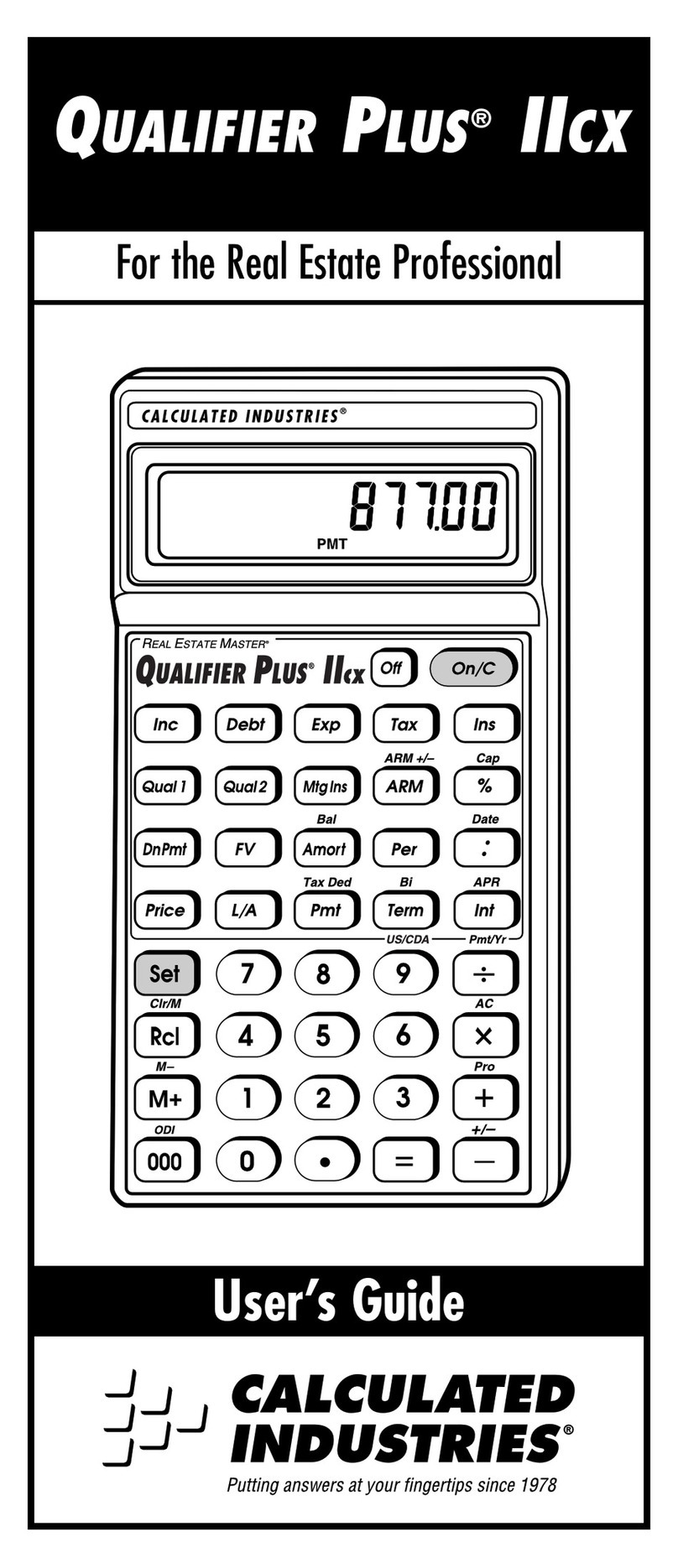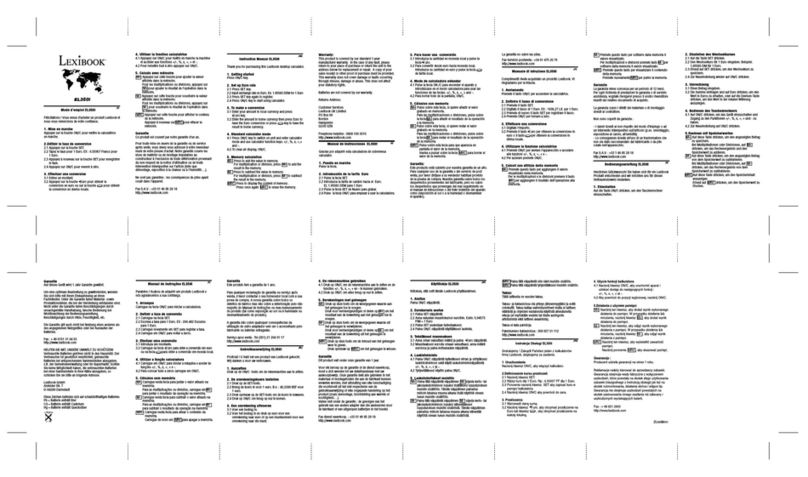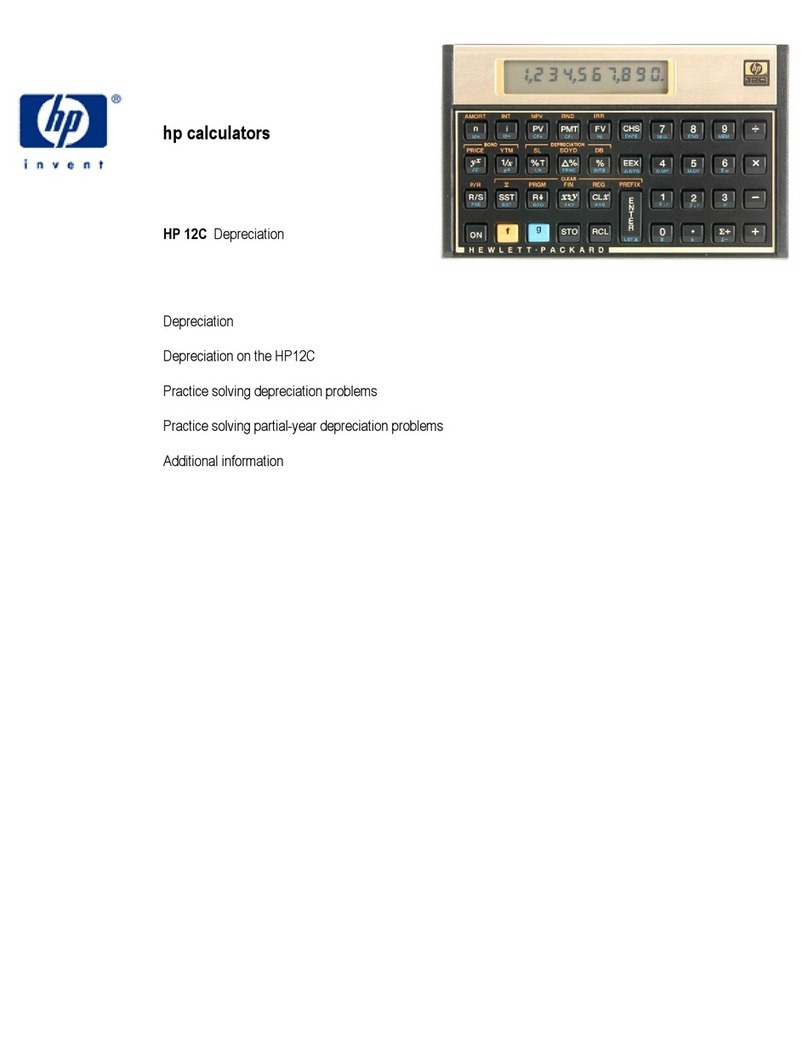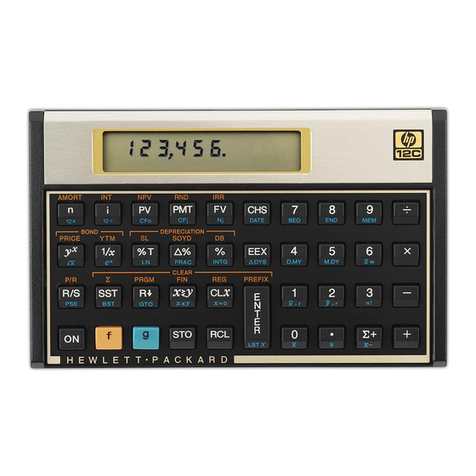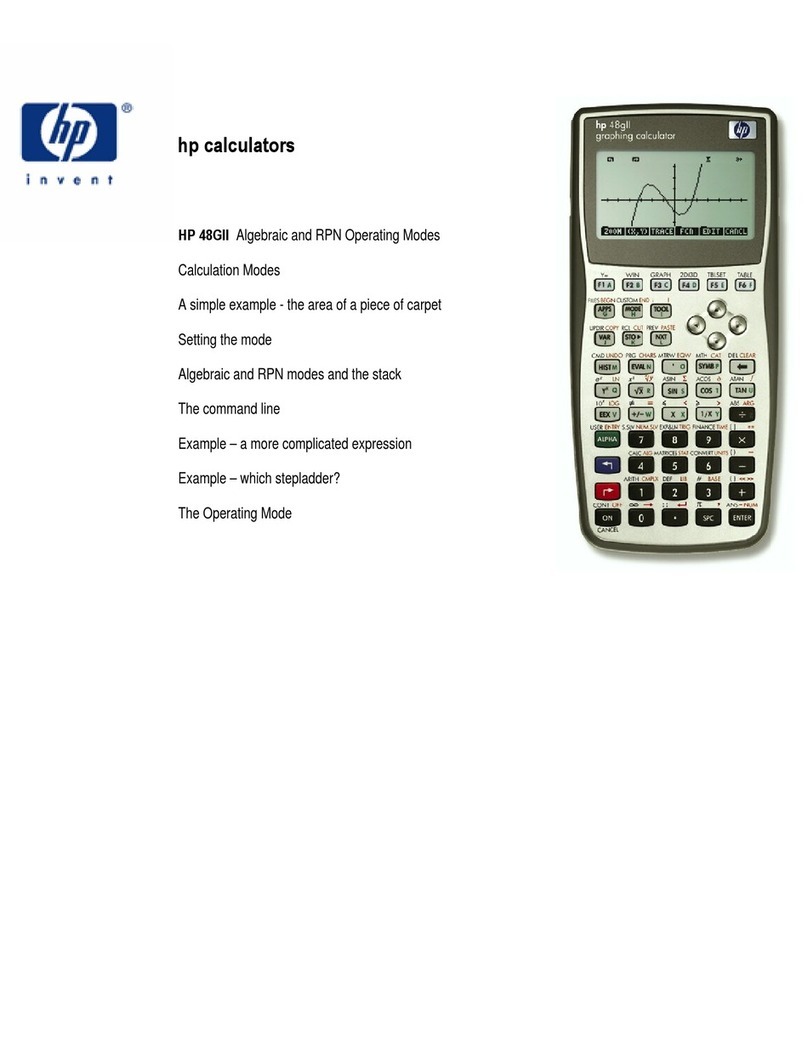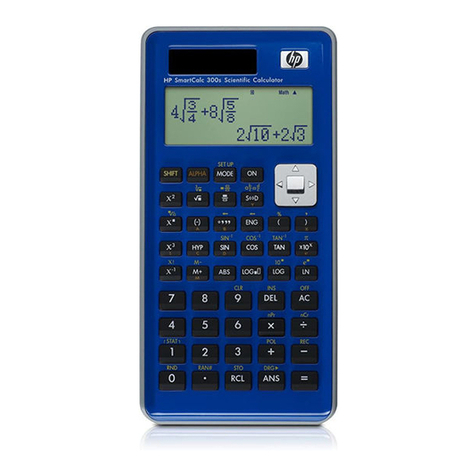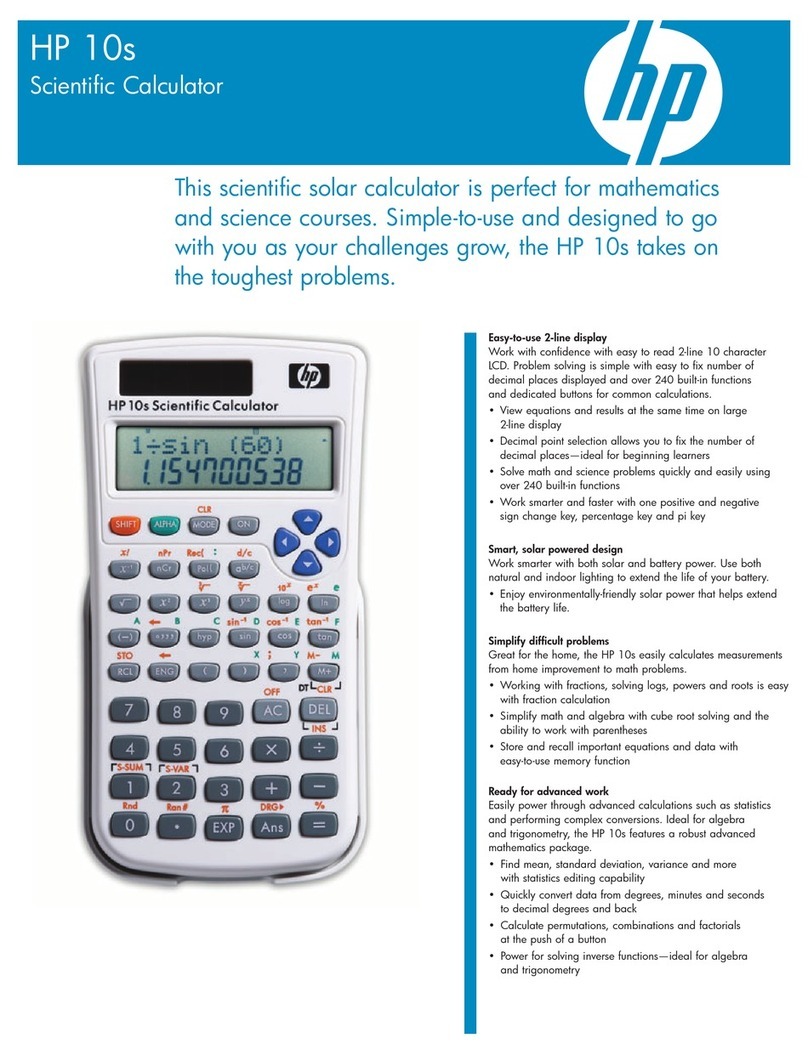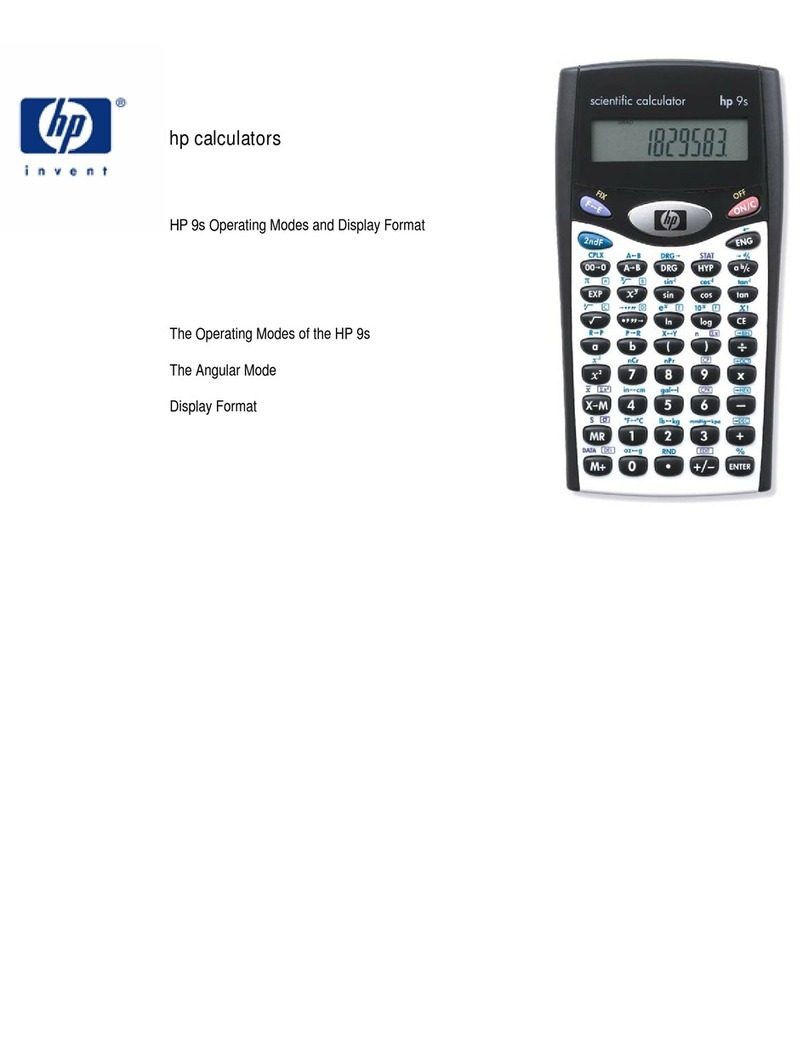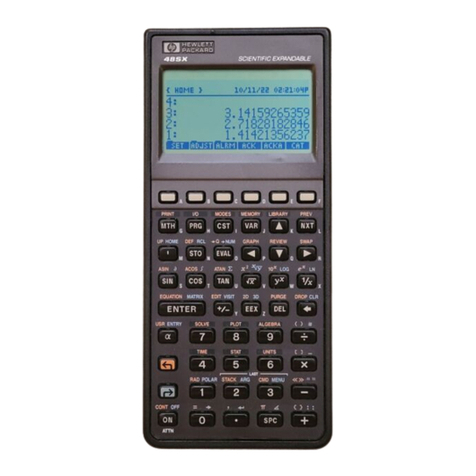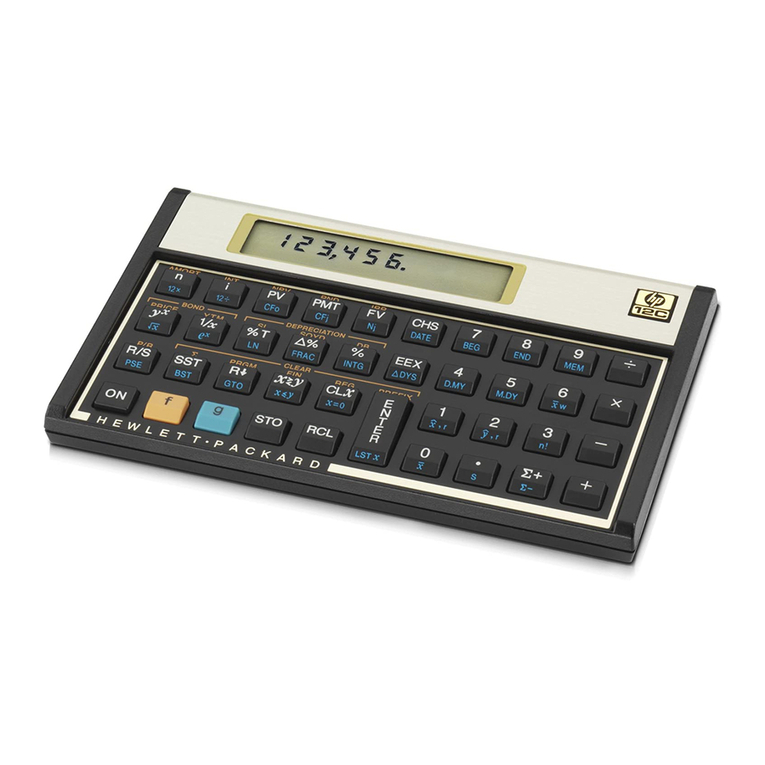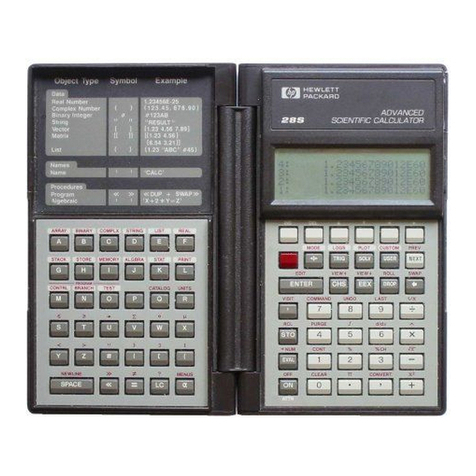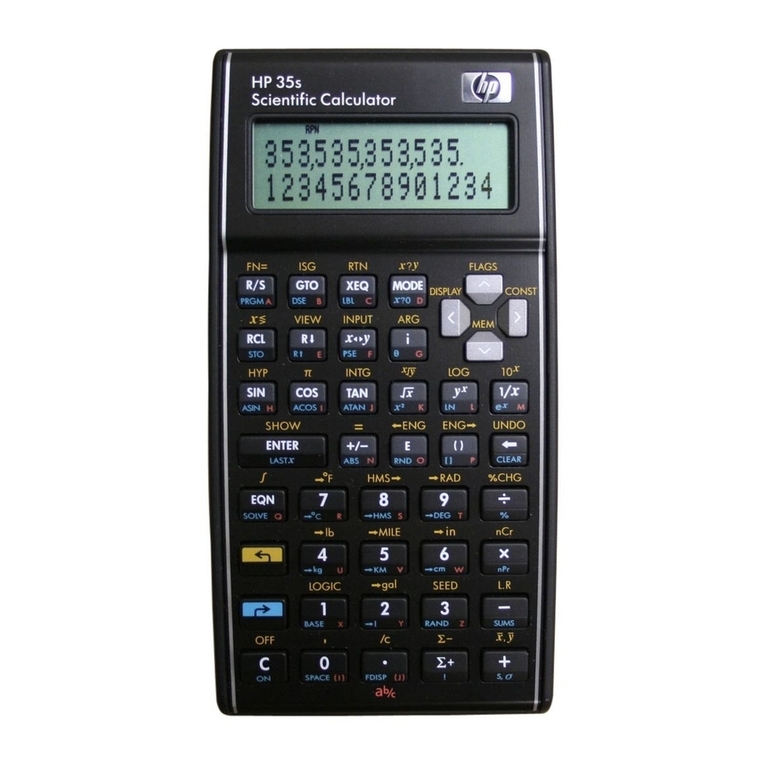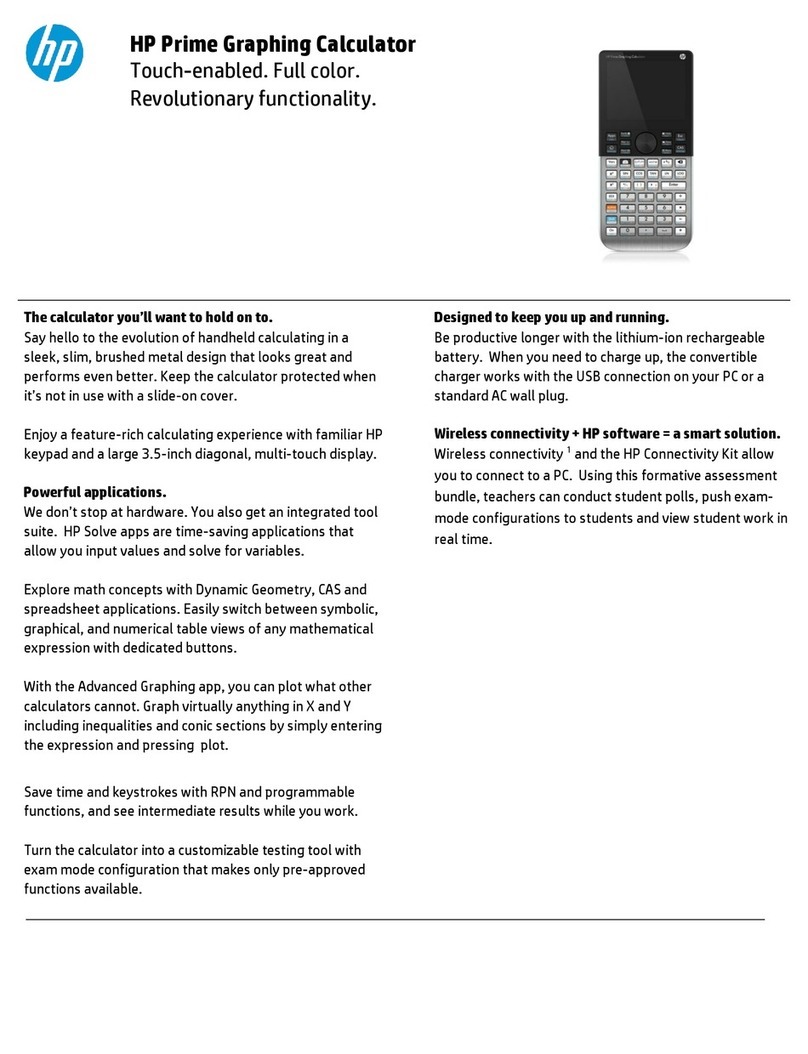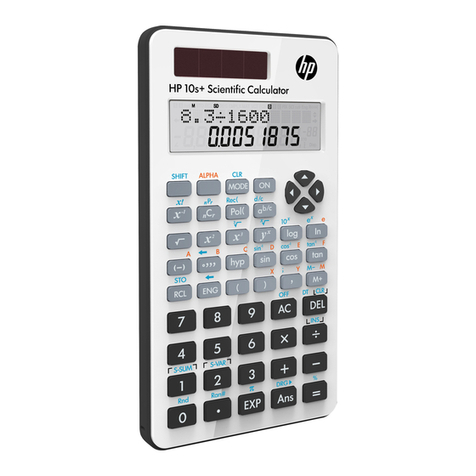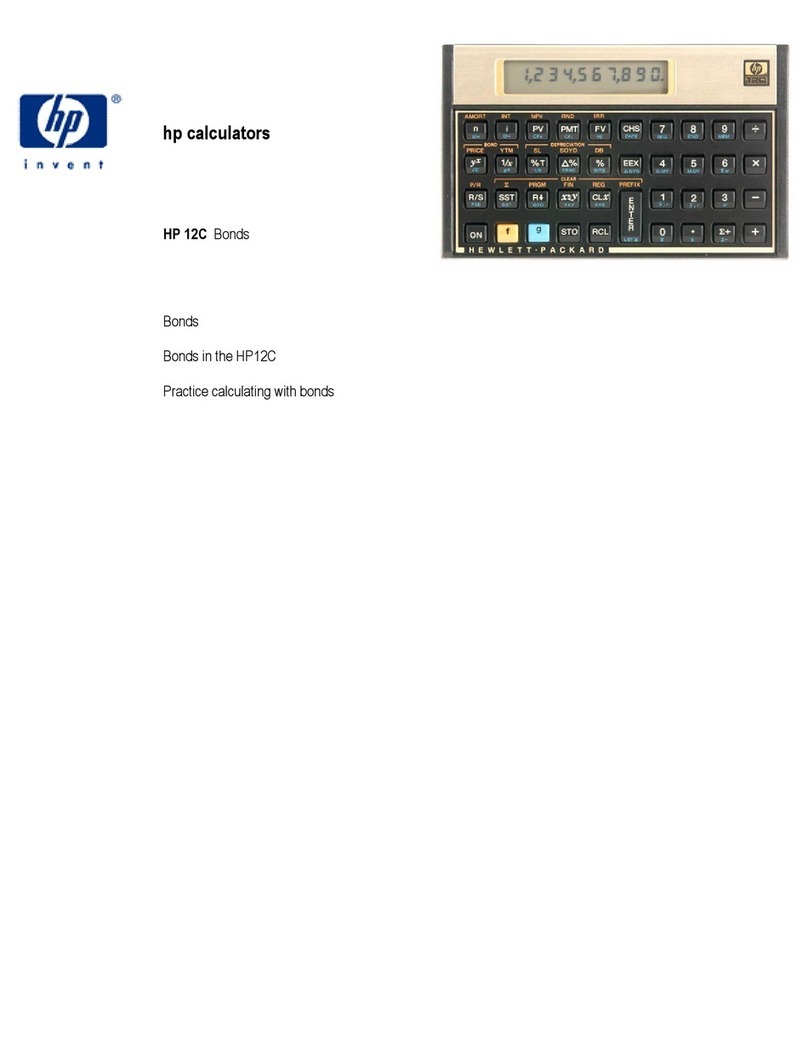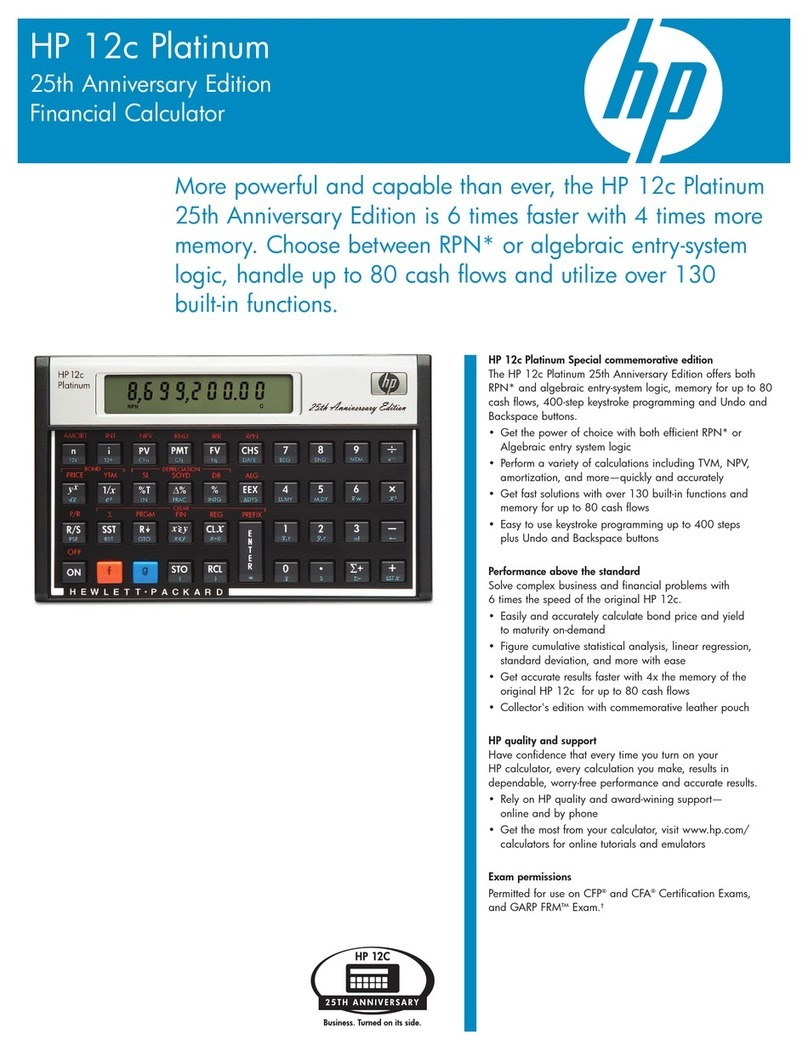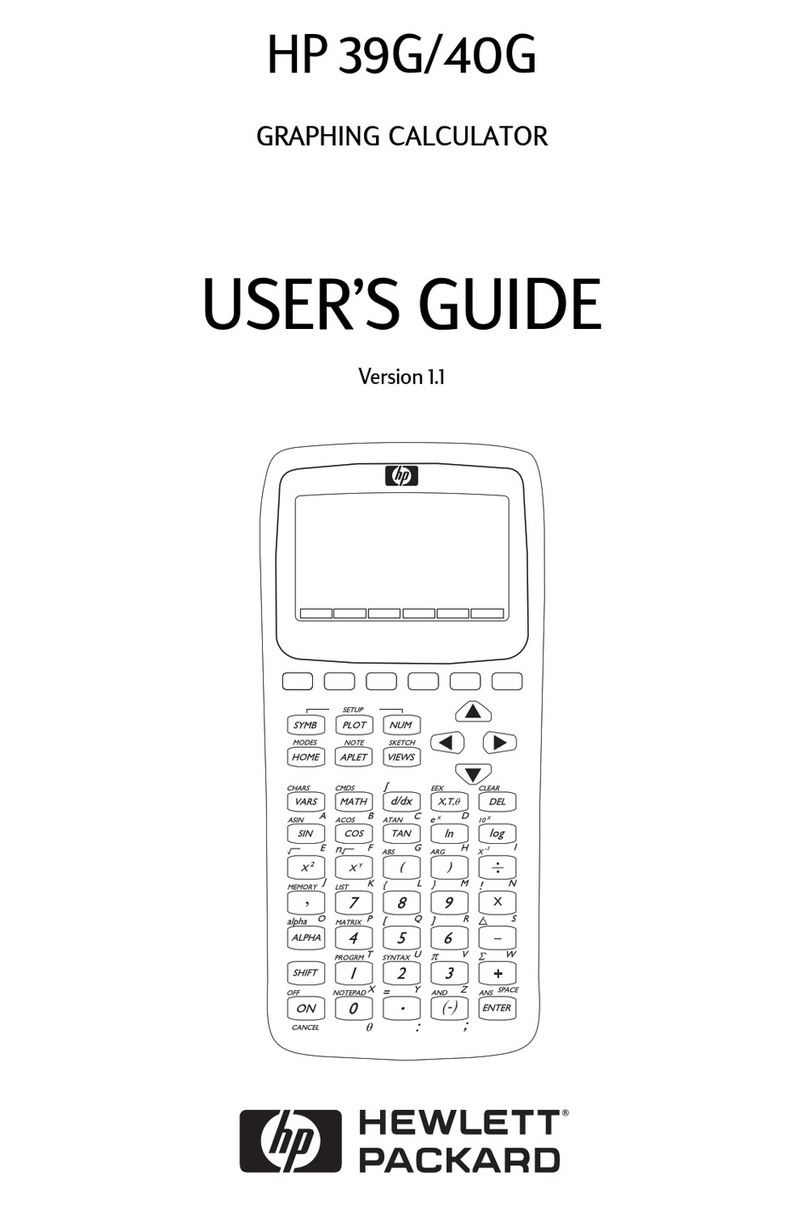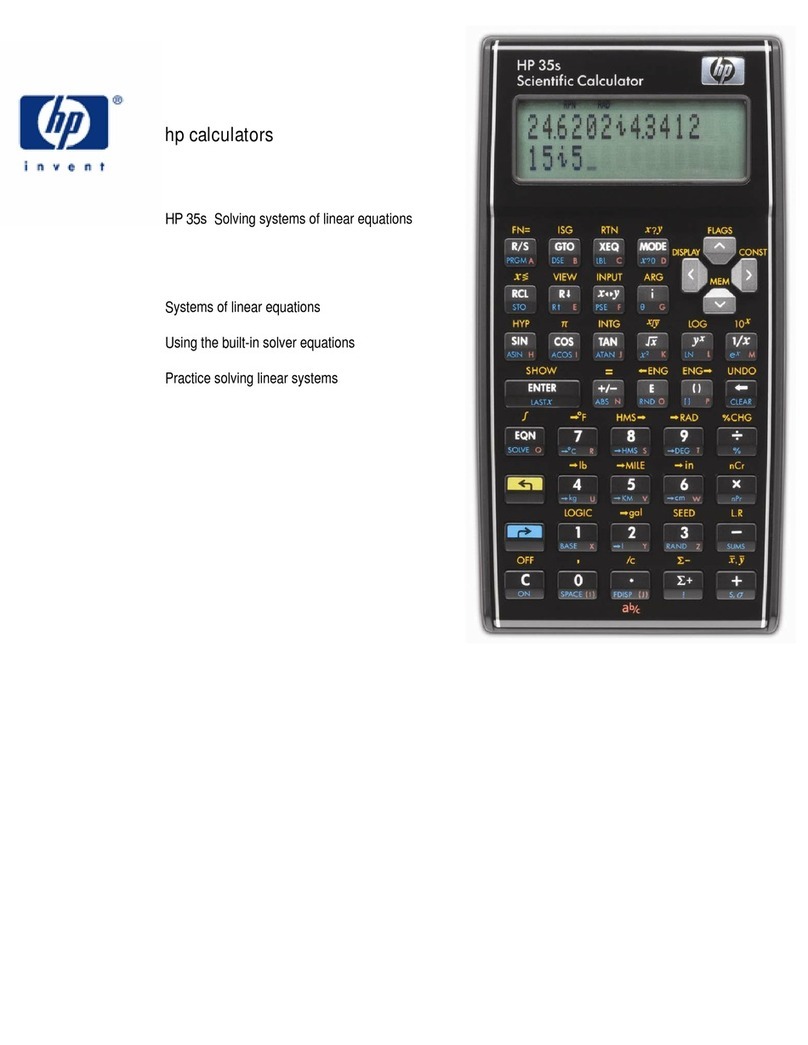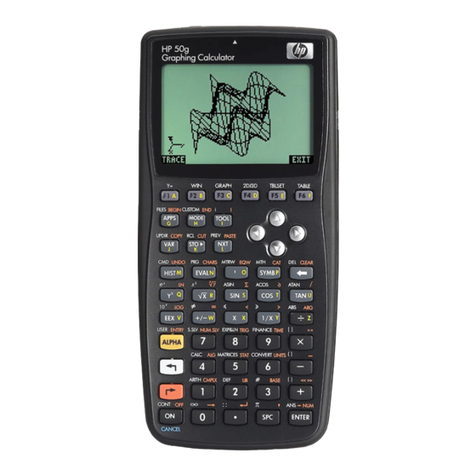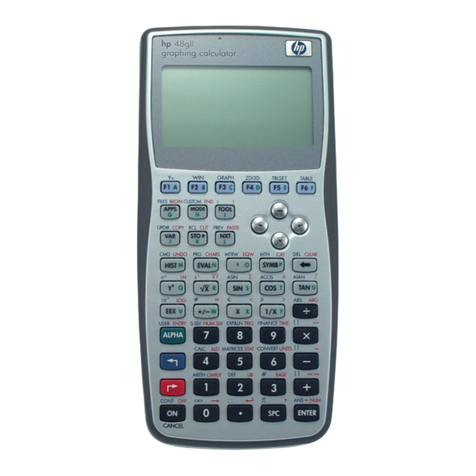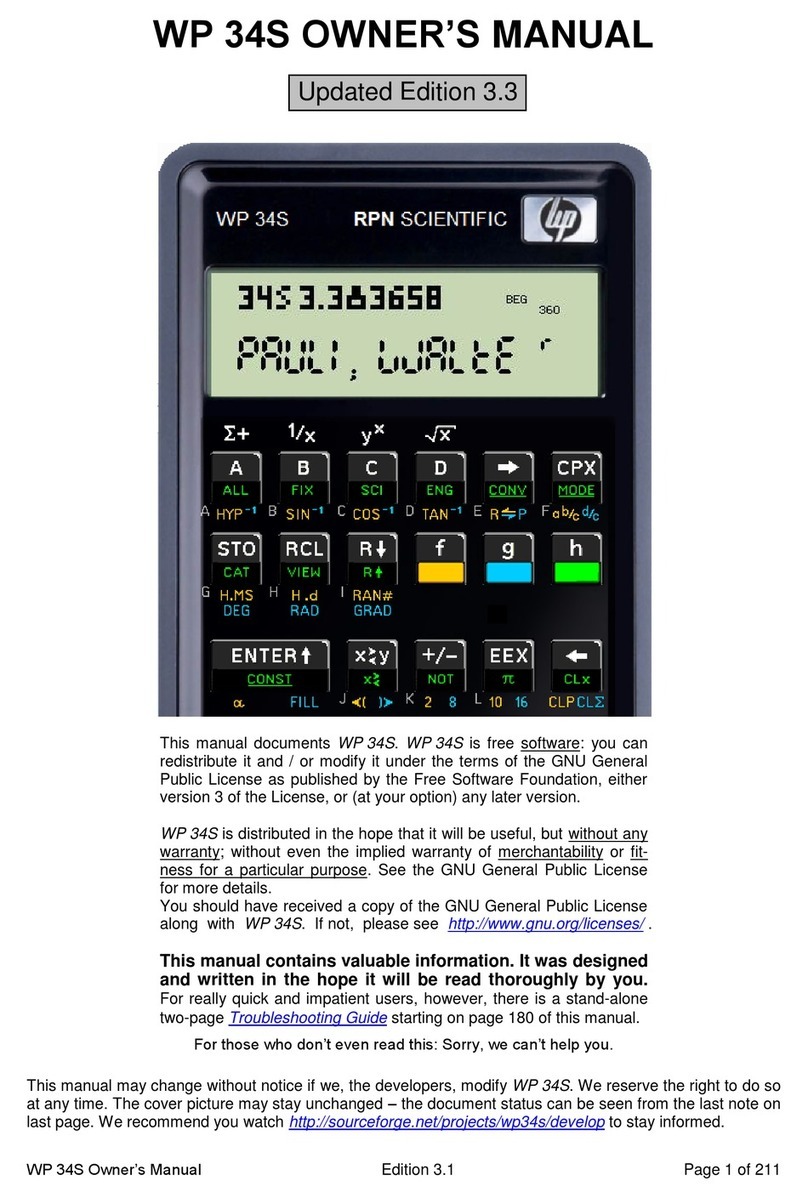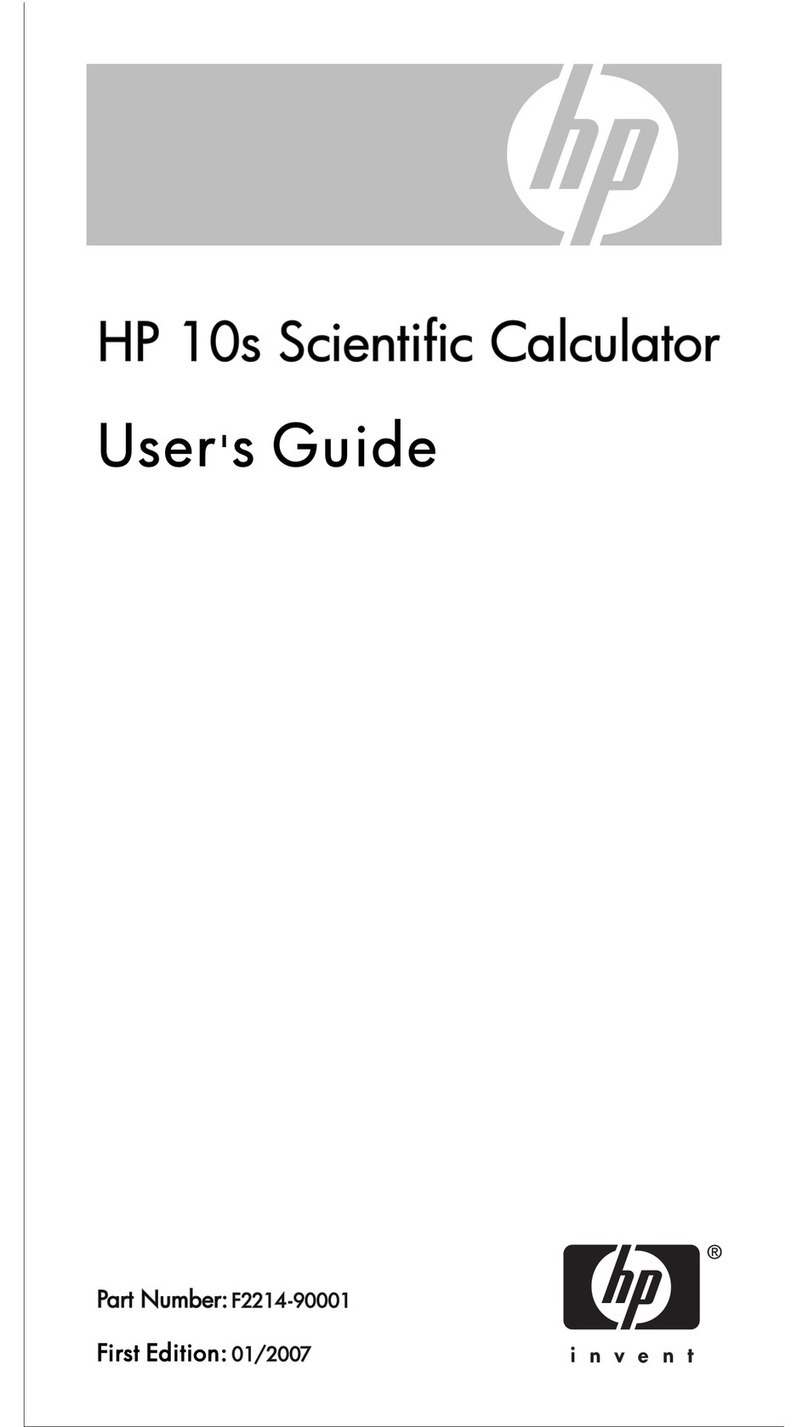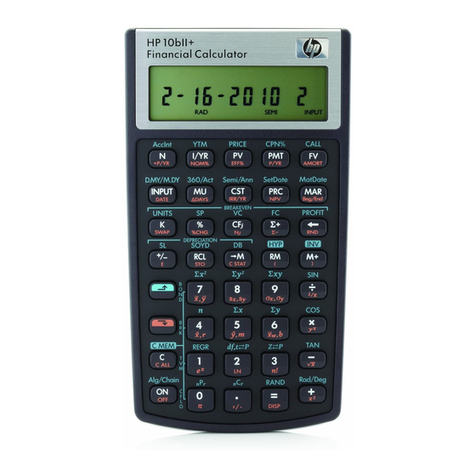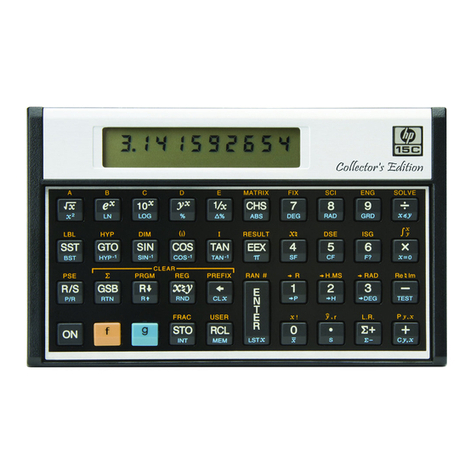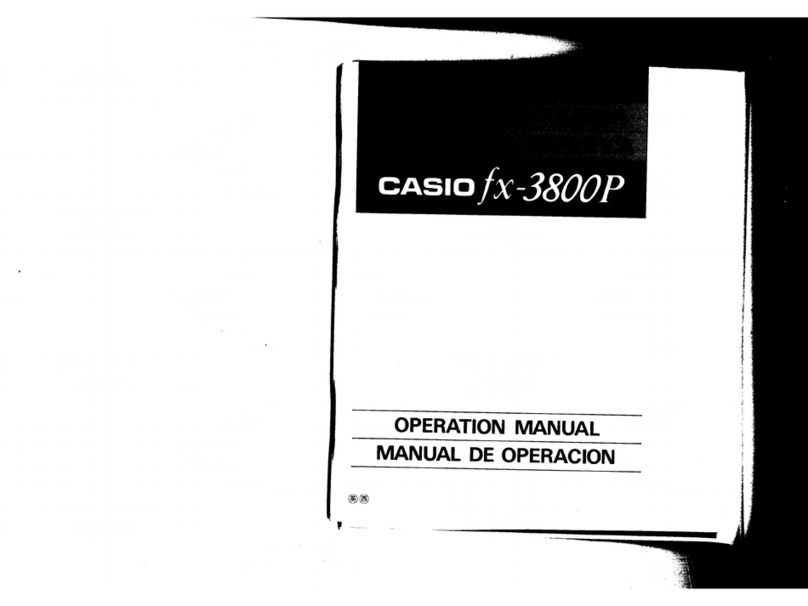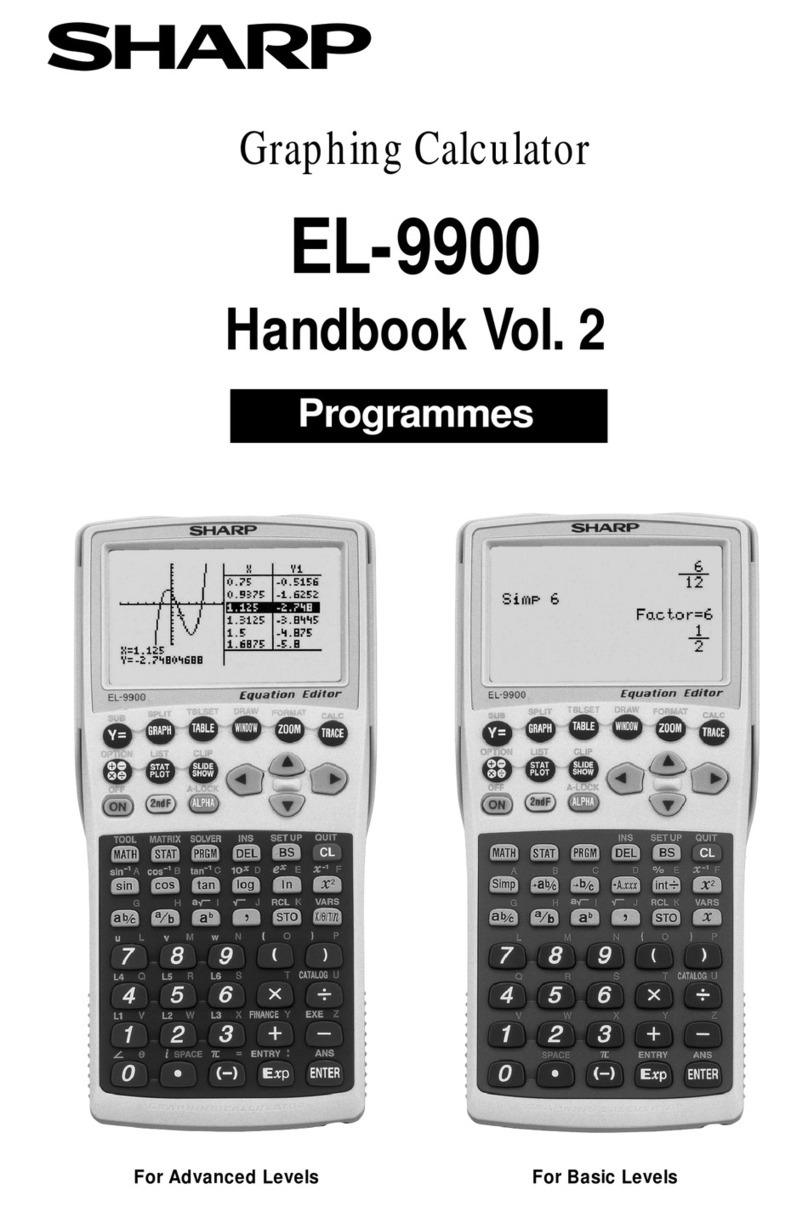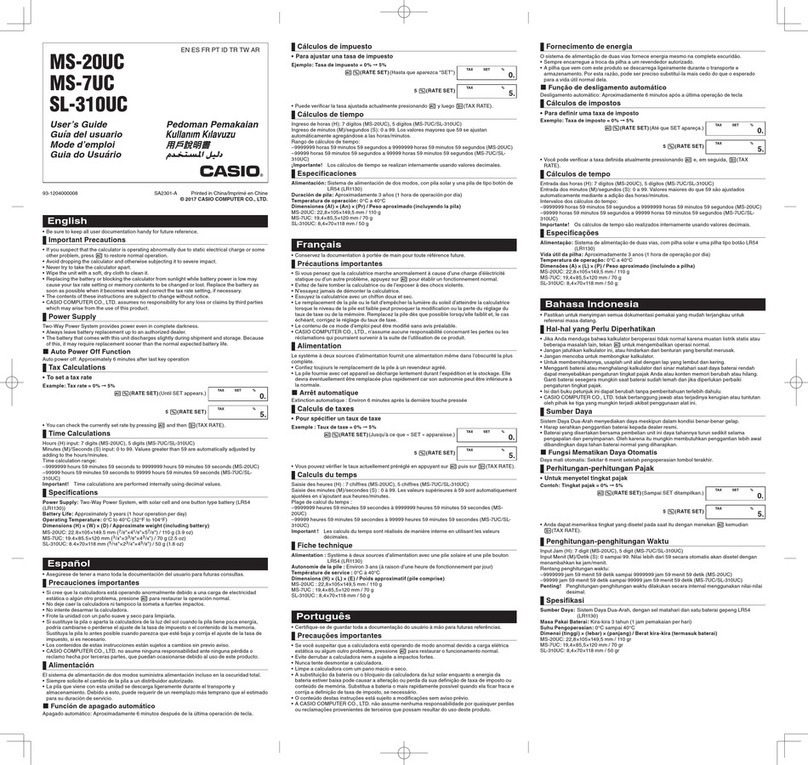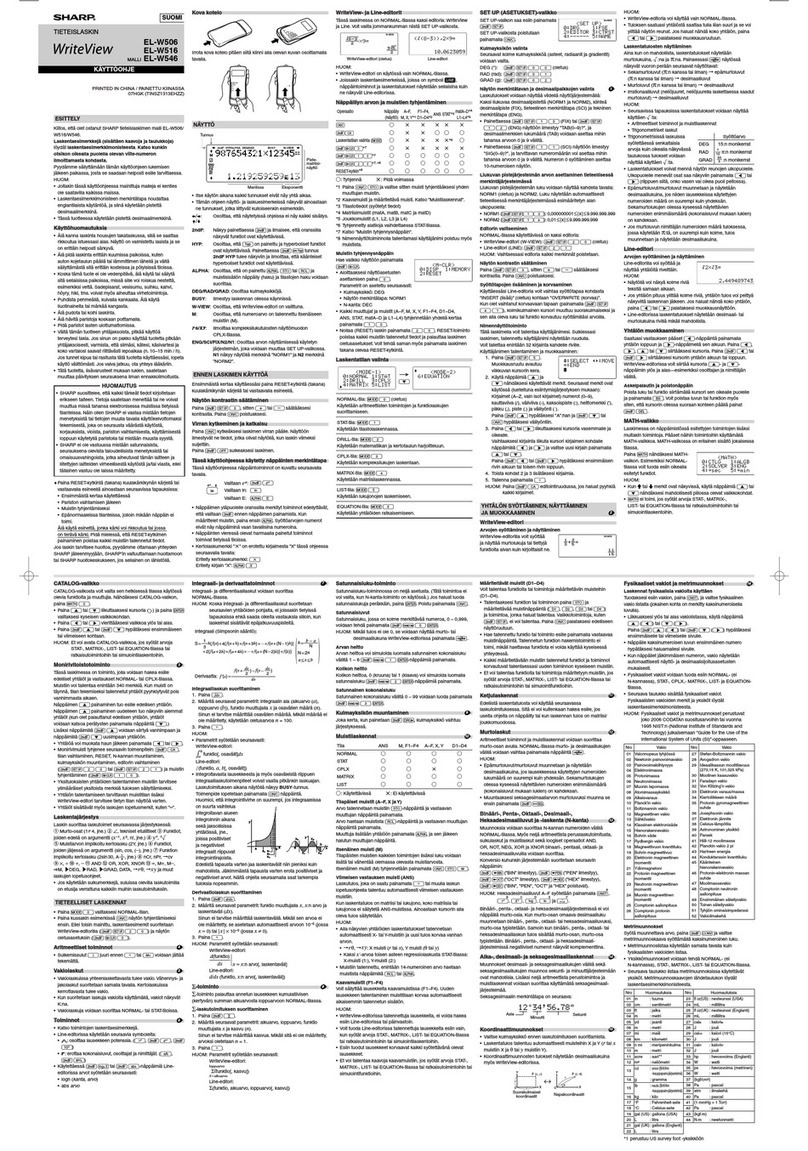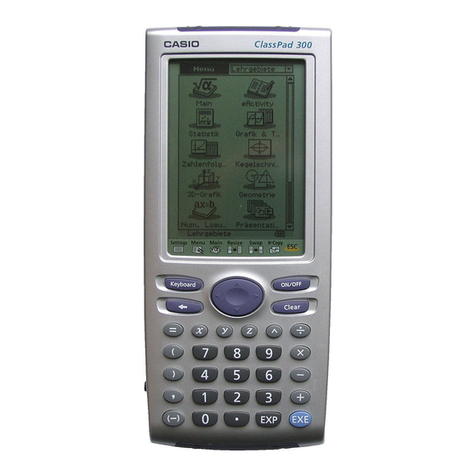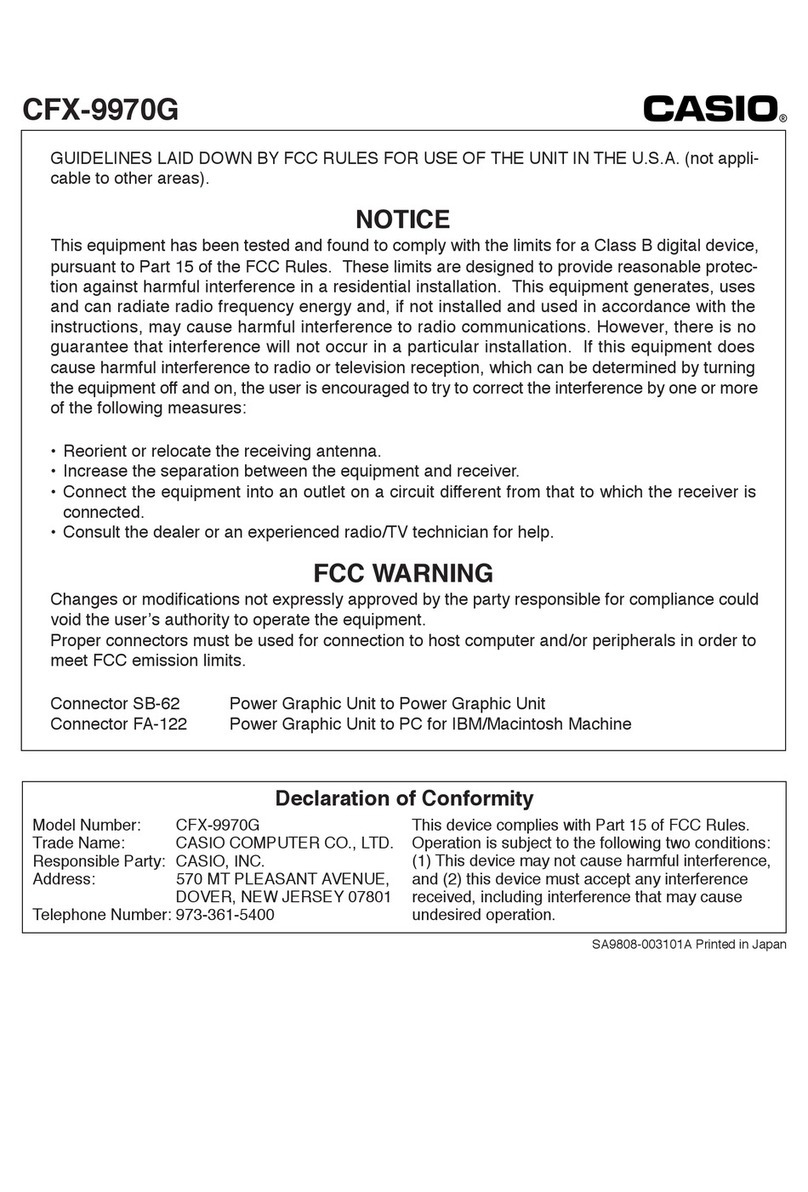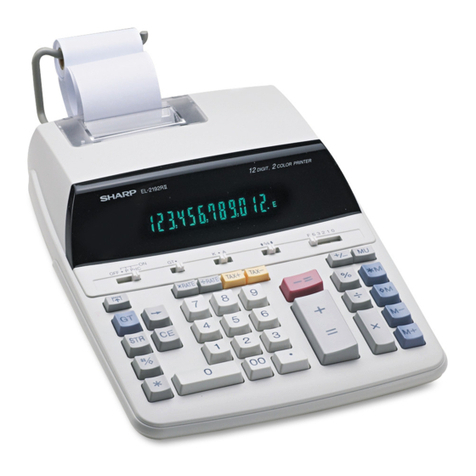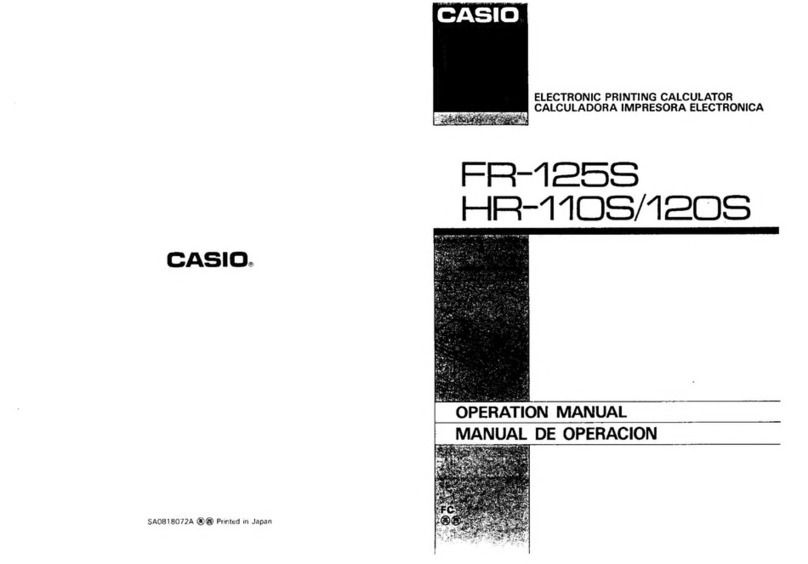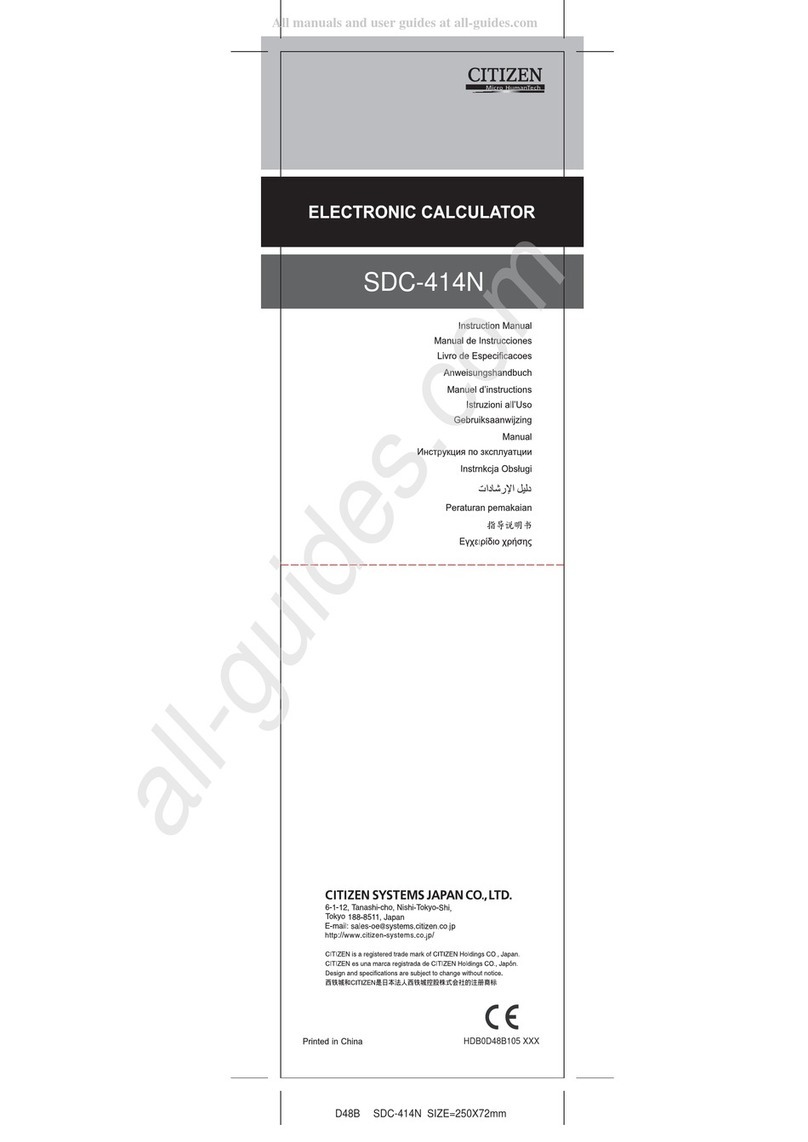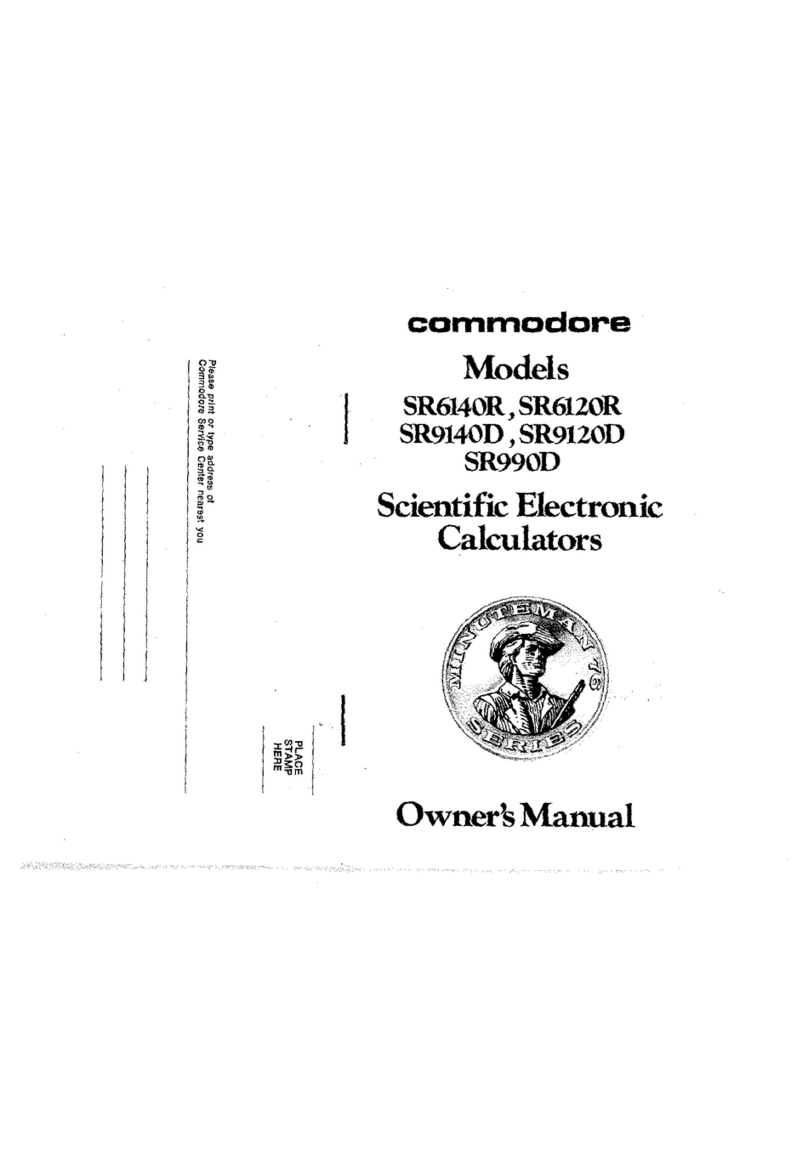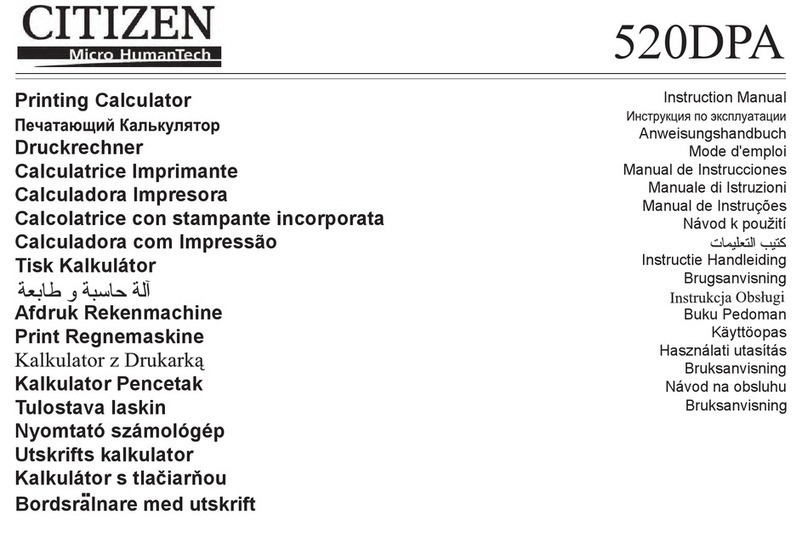
hp calculators
HP 9g Solving Problems Involving Fractions
Basic concepts
Those numbers that can be written as one integer over another, i.e. b
a, are called rational numbers. Note that b can’t be
zero. When written as the quotient of two integers, rational numbers are called fractions. In arithmetic there are three
basic rules for fractions:
♦d
c
b
a>if ad – bc > 0 (same for < and =)
♦bdbcad
d
c
b
a
=+
♦bd
ac
d
c
b
a=×
b
ais also referred to as a vulgar fraction when aand bare positive integers (the signis considered apart) .ais called
the numerator (corresponds to the dividend in a division) and bis the denominator (which corresponds to the divisor in
a division). When the numerator is 1 (or –1), it is a unit fraction. A proper fraction is a fraction in which the numerator
(apart from the sign, remember) is less than the denominator. Therefore, proper fractions always lie between –1 and 1. If
the numerator is greater than the denominator, the fraction is called improper.
Those vulgar fractions that have the same value are called equivalent fractions: for example 4
3and 8
6. Reducing a
vulgar fraction to its lowest terms means to find the simplest equivalent fraction, which can be done by dividing the
numerator and the denominator by the same number. This process is also called cancellation.
Mixed numbers are those improper fractions written as an integer followed by a proper fraction. For example: 4¾ or 2½.
It is important to understand that there’s no implicit multiplication in c
b
a(also written as c
b
a). In fact, it is an addition
that is implicit:
cbac
c
b
aa c
b
=+=
When the numerator and the numerator of a fraction are not both integers then the fraction is called complex, for
example:
4
3
3
13 . Finally, a number where the part which is a proper fraction is expressed as a set of digits placed after a
decimal point, is called a decimal (also known as decimal fraction) e.g. 50
7
3= 3.14.
Fractions on the HP 9g
The HP 9g has three keys to handle fractions, namely O, ~o and ~n . The symbol used by the HP
9g to show a fraction (i.e. the equivalent to the symbol “/”, sometimes called solidus) is “ ” and is entered into the entry
line by pressing O. Thus, 7 8 means 87 and is entered by pressing 7O8. Mixed numbers are also
keyed in using the Okey twice, for instance: 7 89 means 9
8
7and is entered into the entry line by pressing 7
O8O9 but this number is displayed in the result line (i.e. once =has been pressed) as 7 89.
hp calculators - 2 - HP 9g Solving Problems Involving Fractions - Version 1.1
